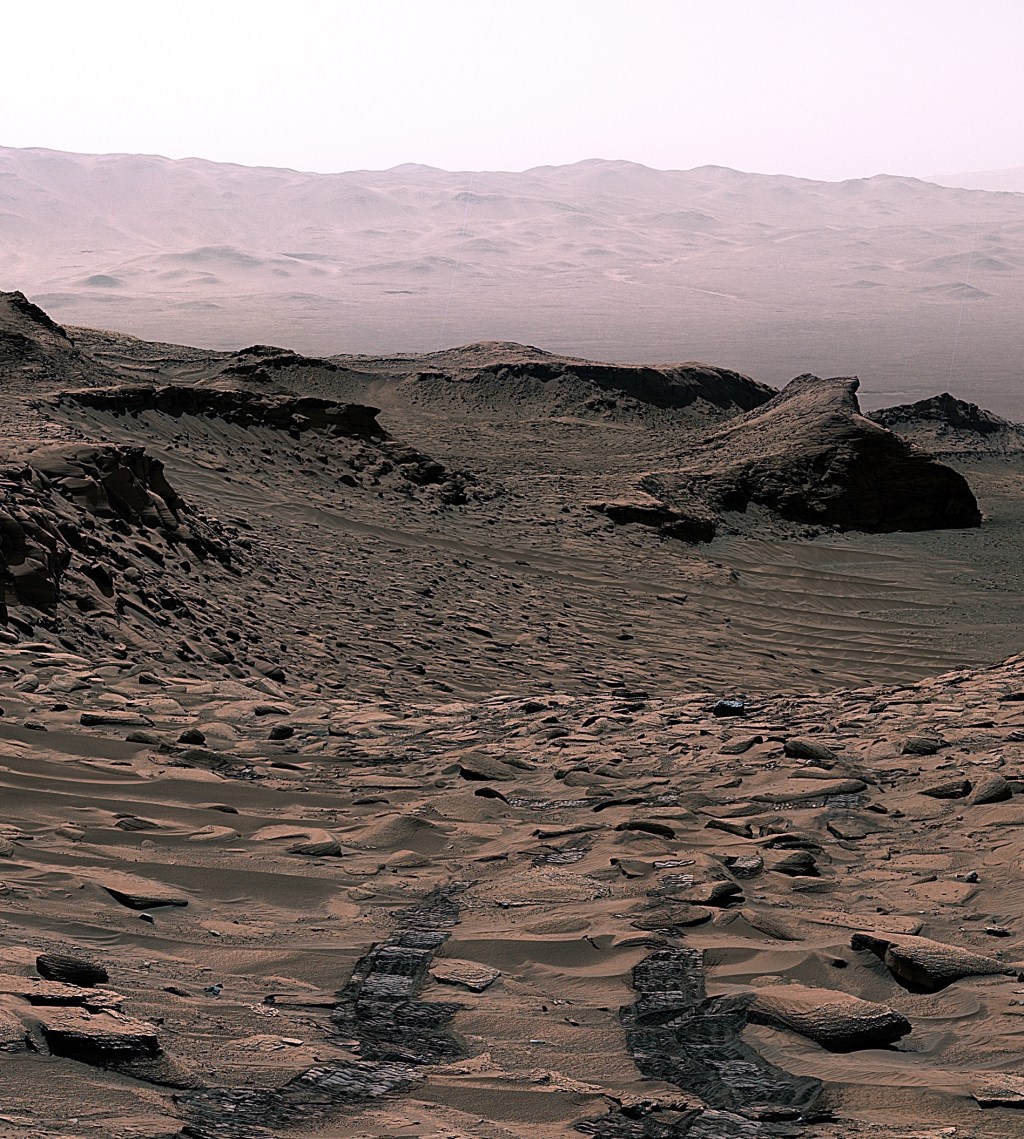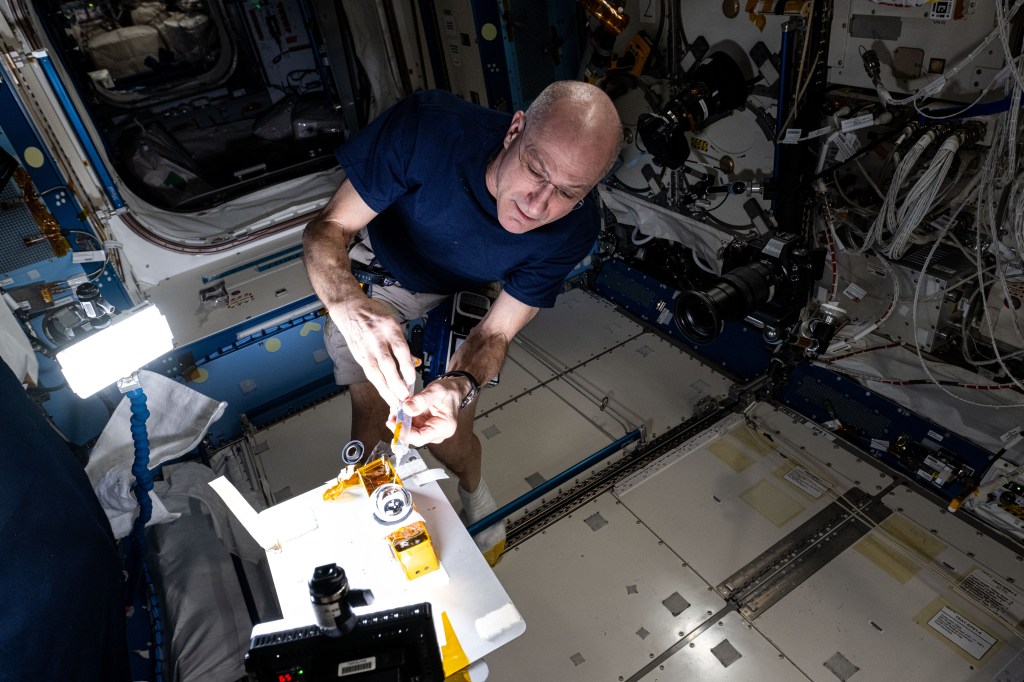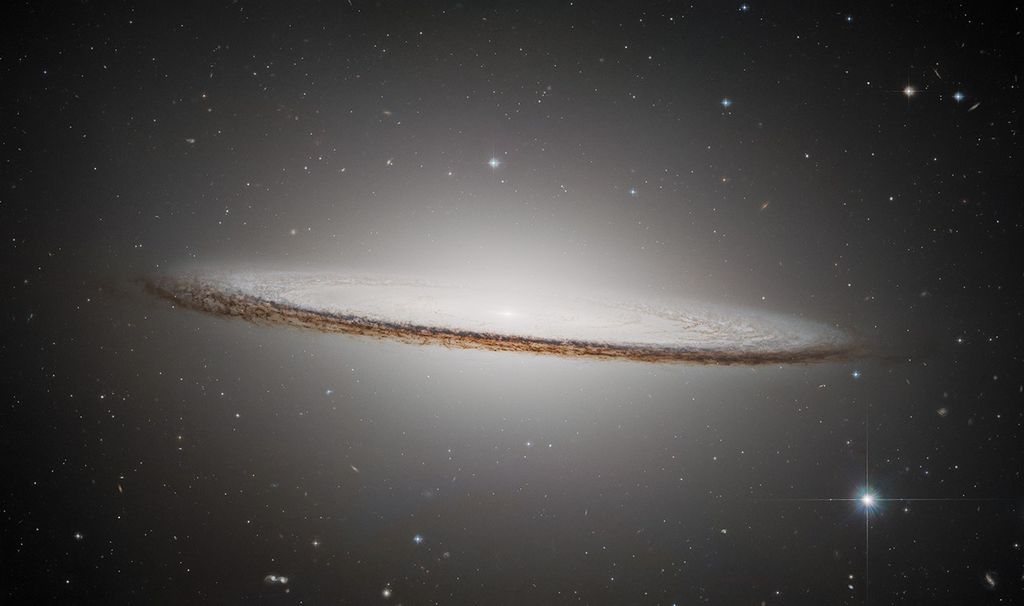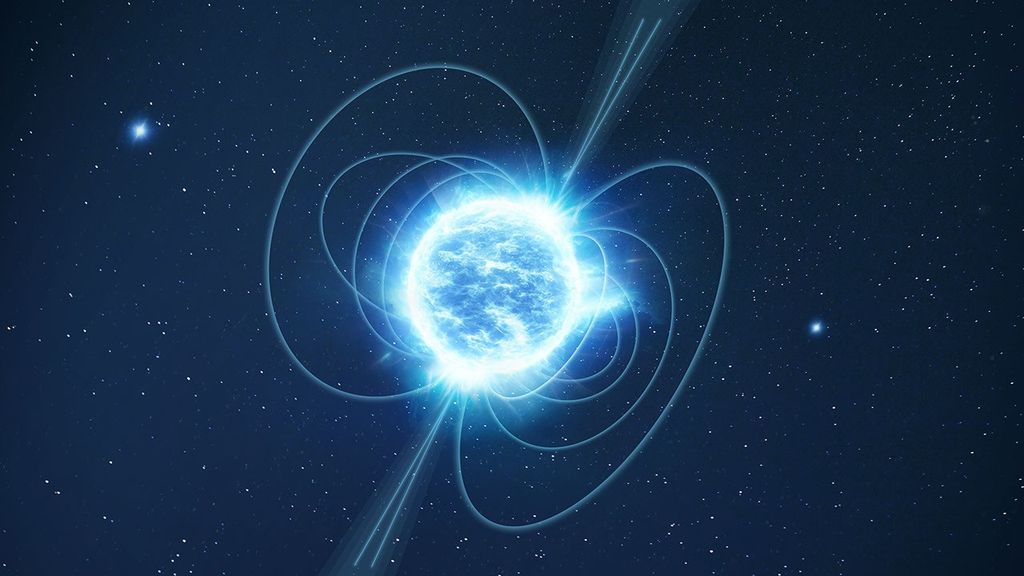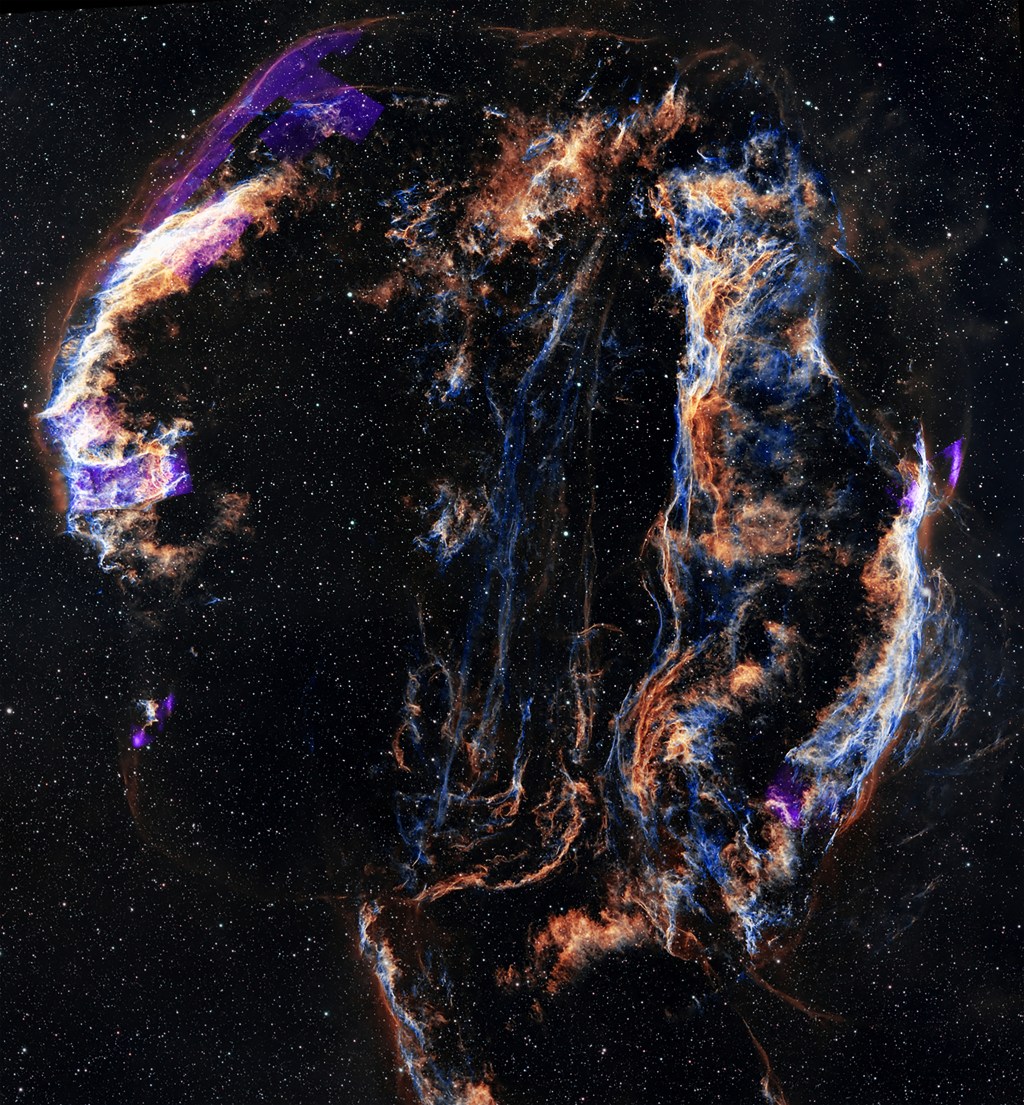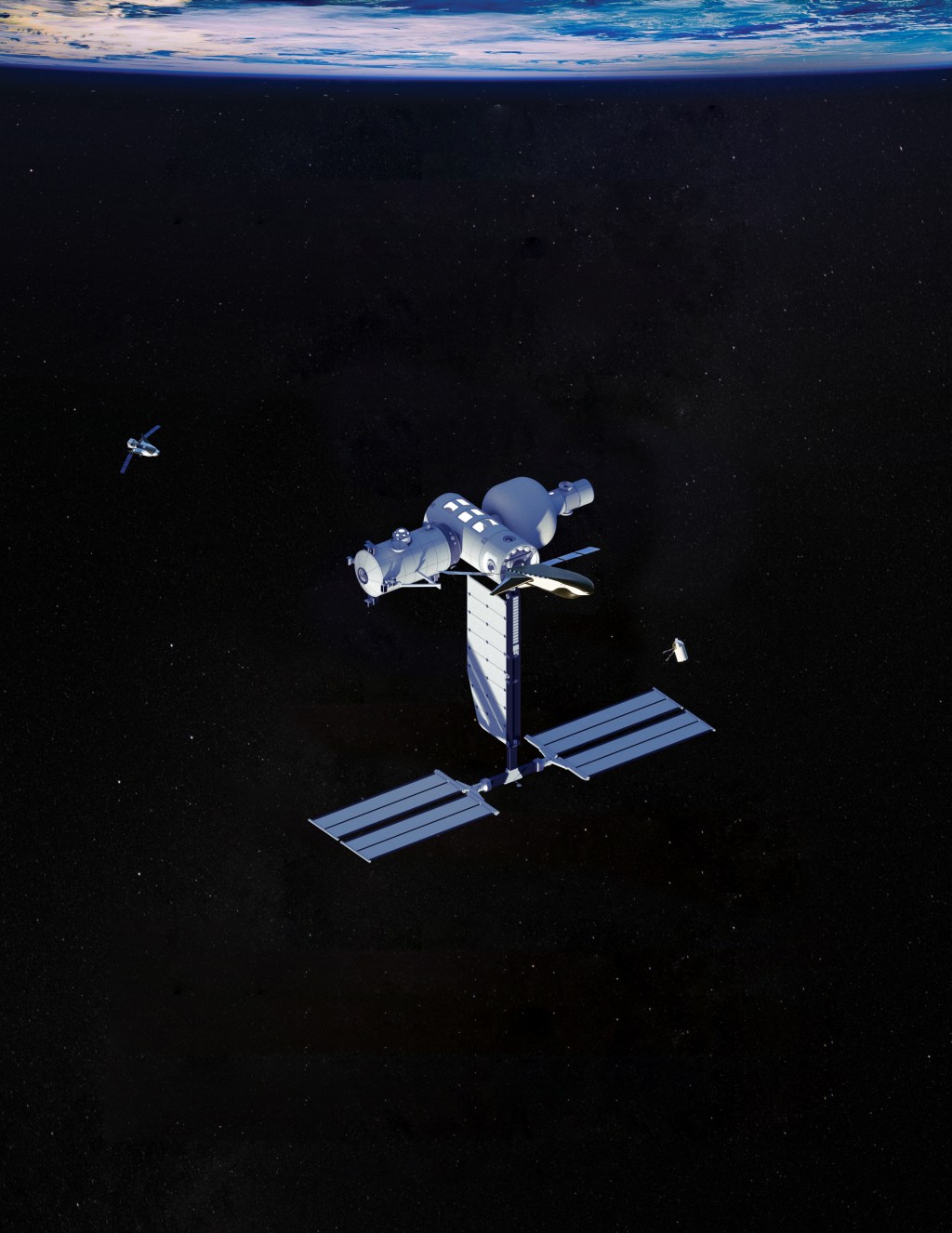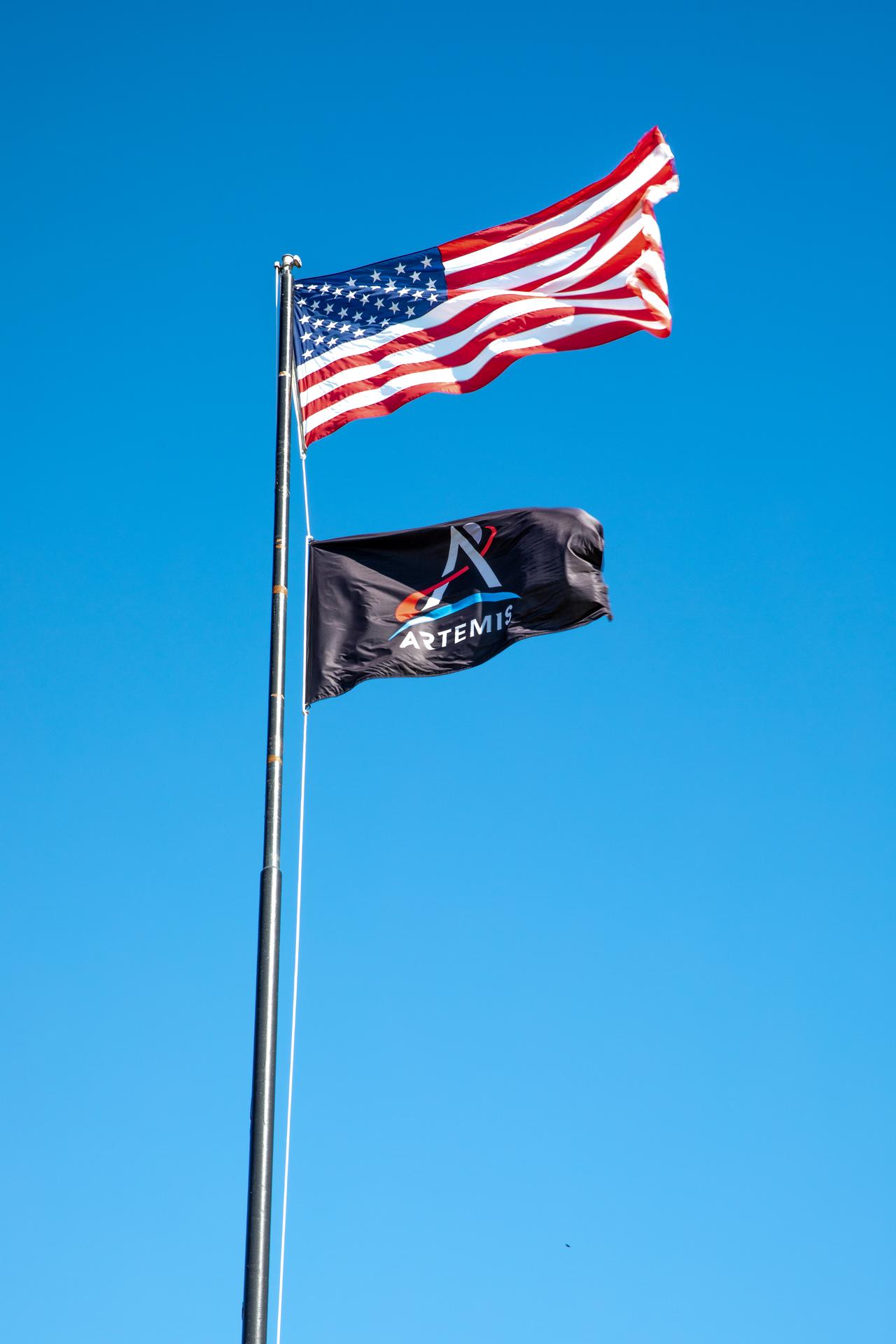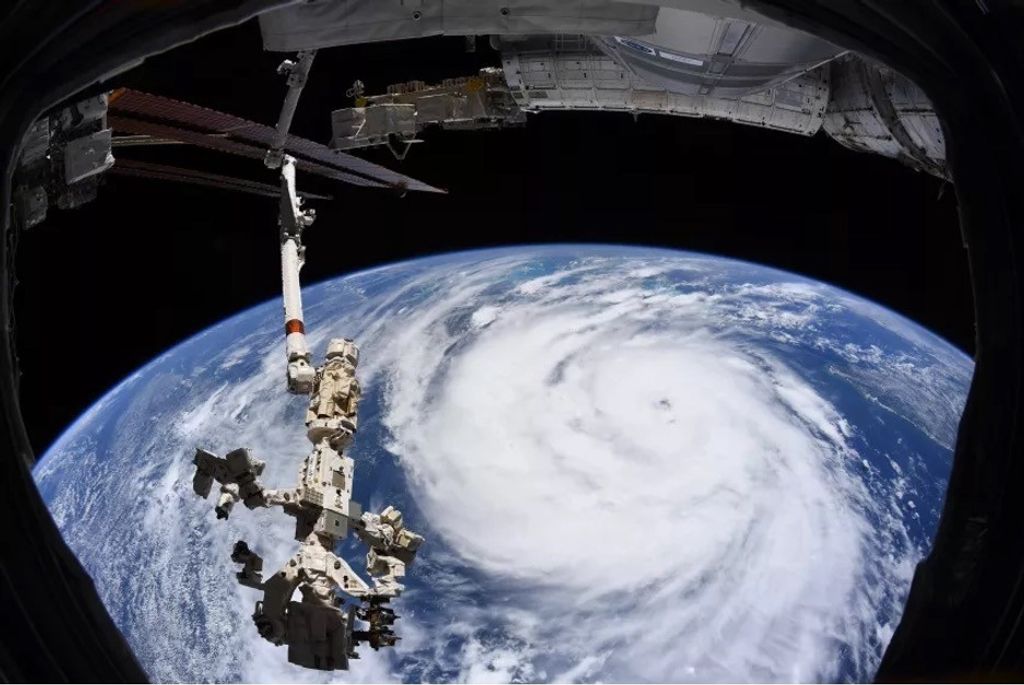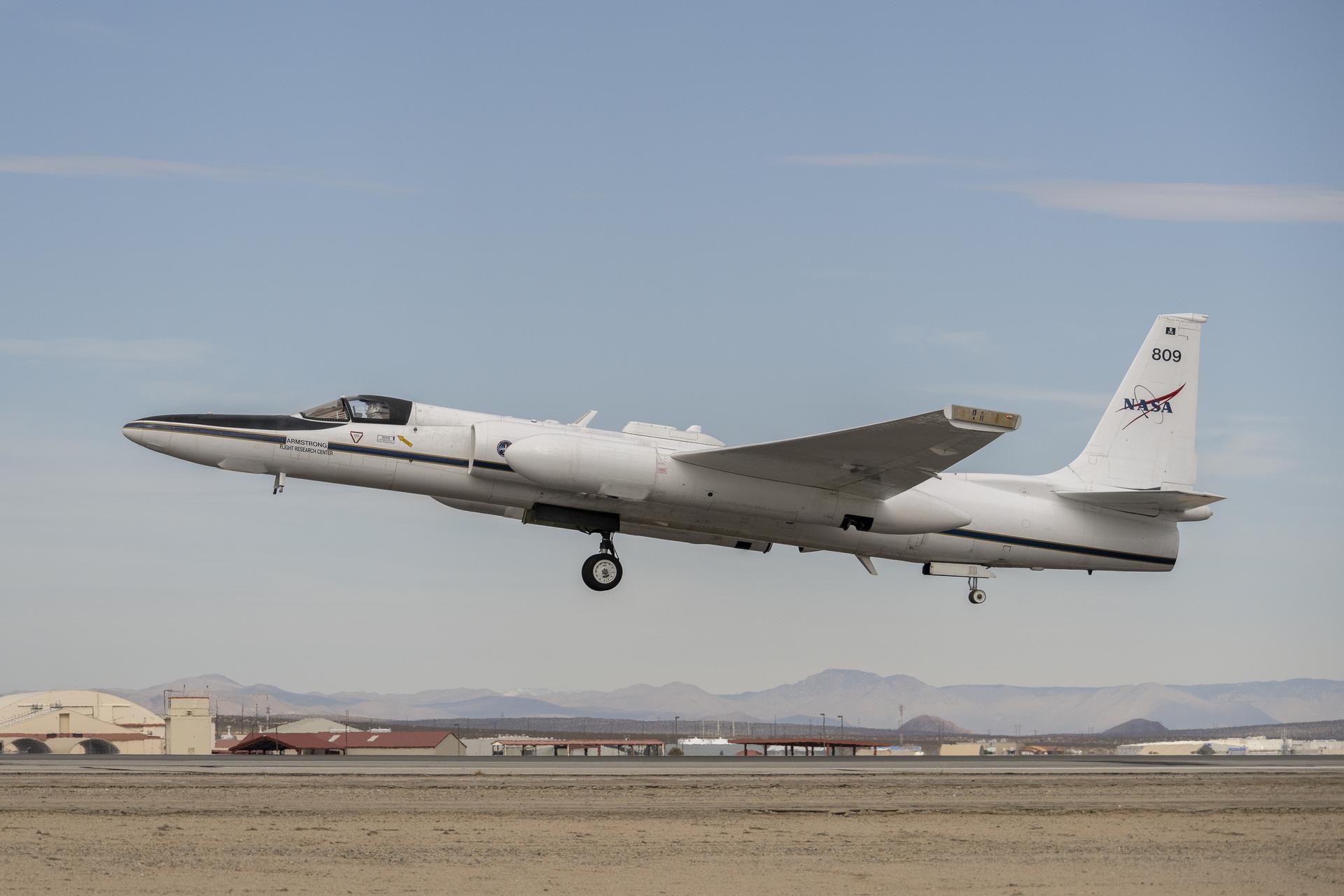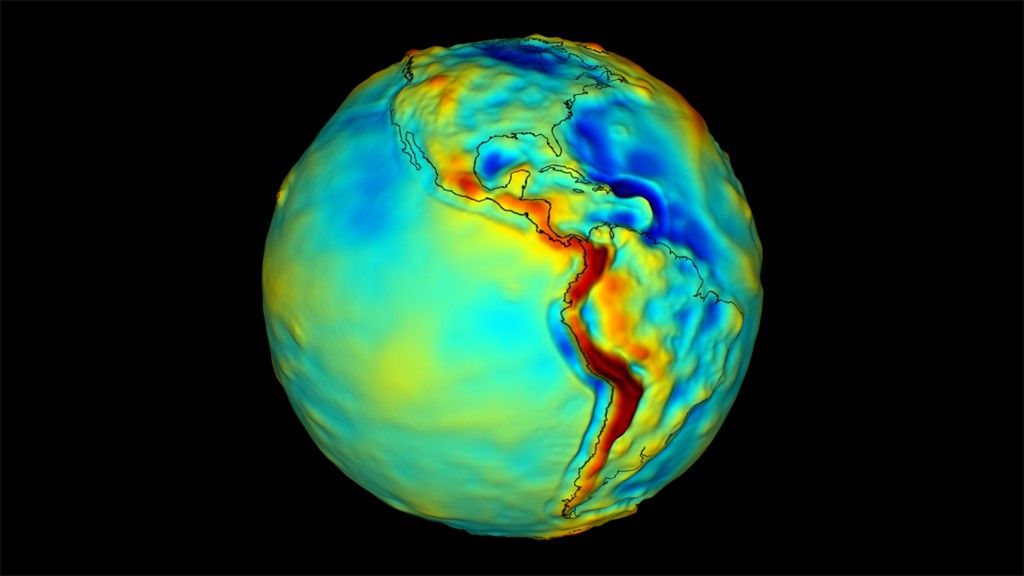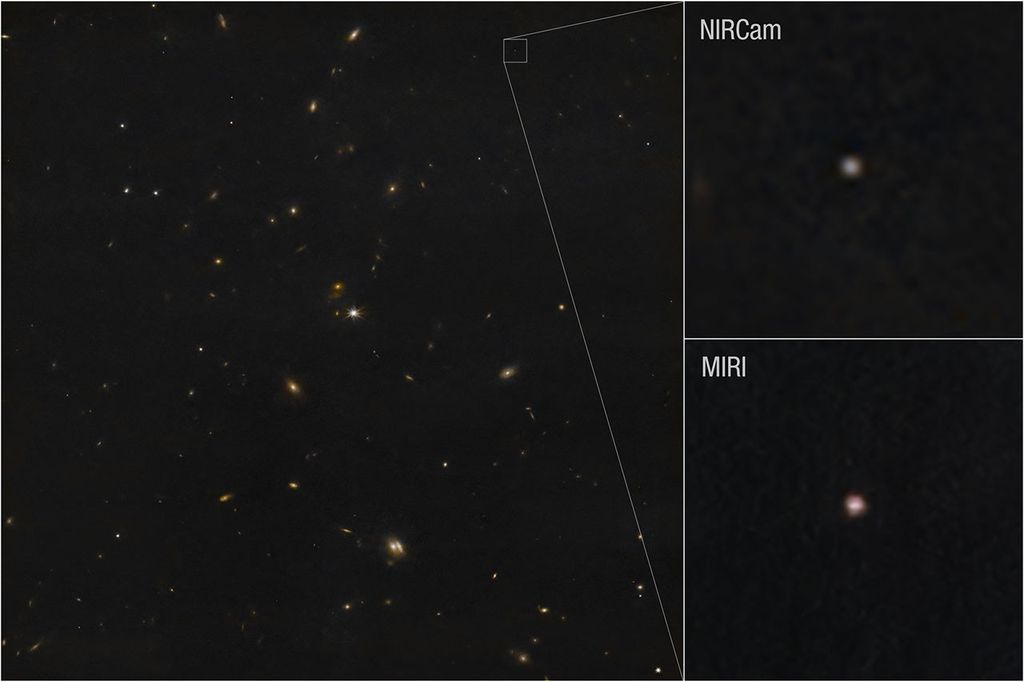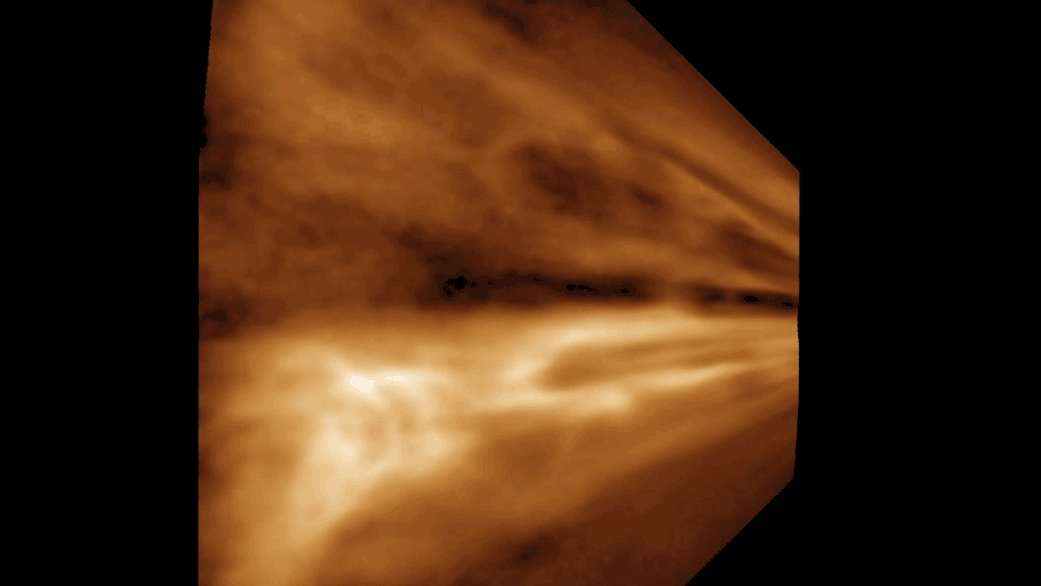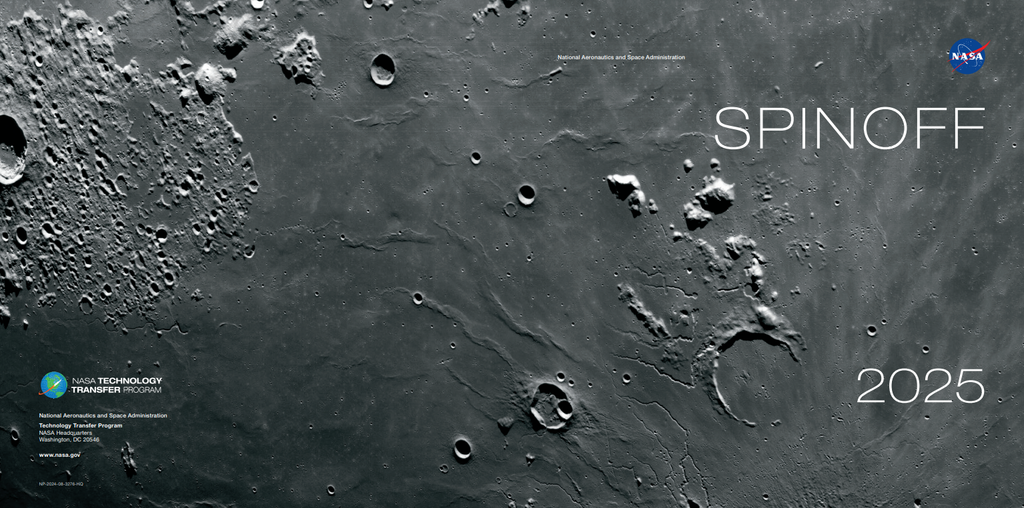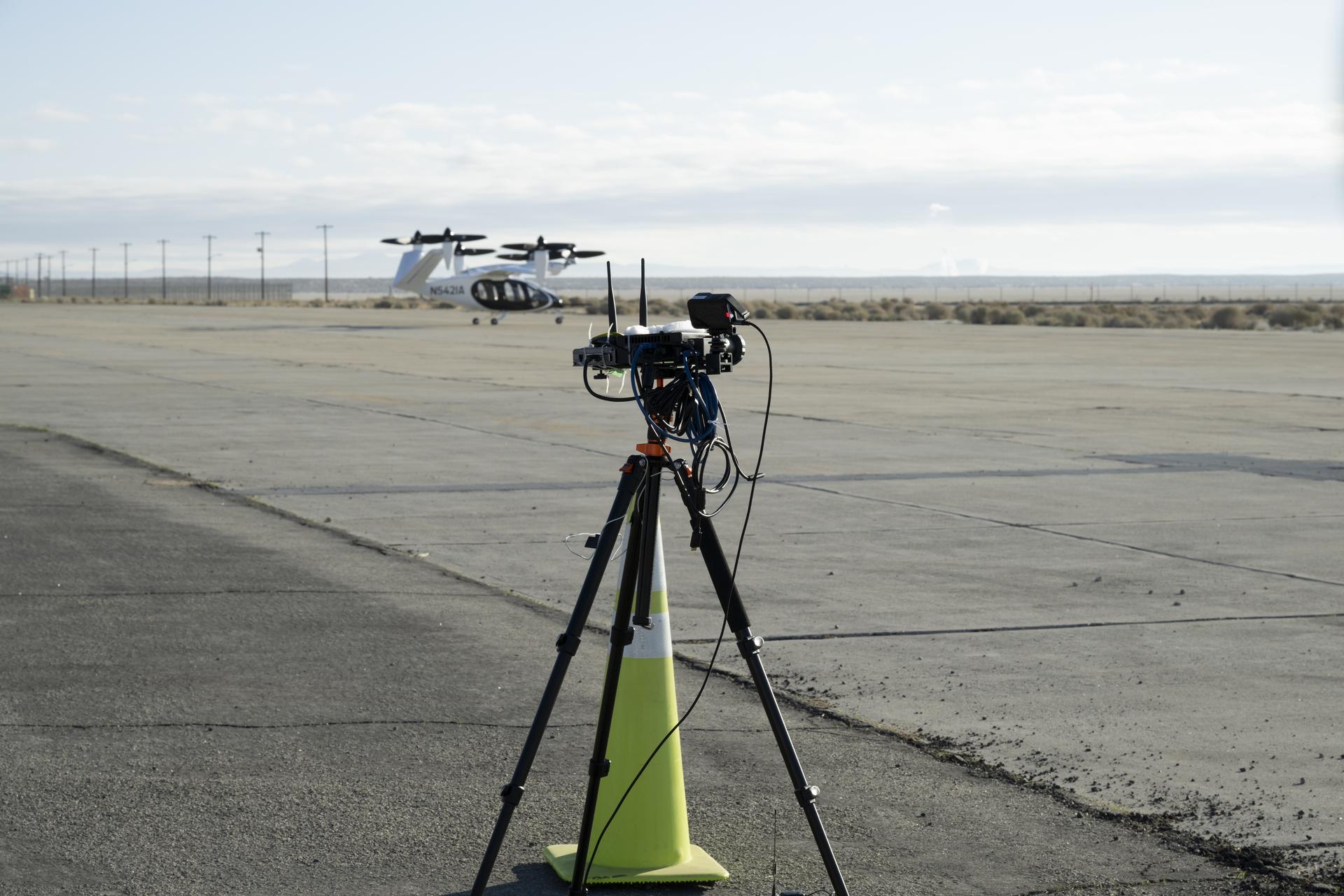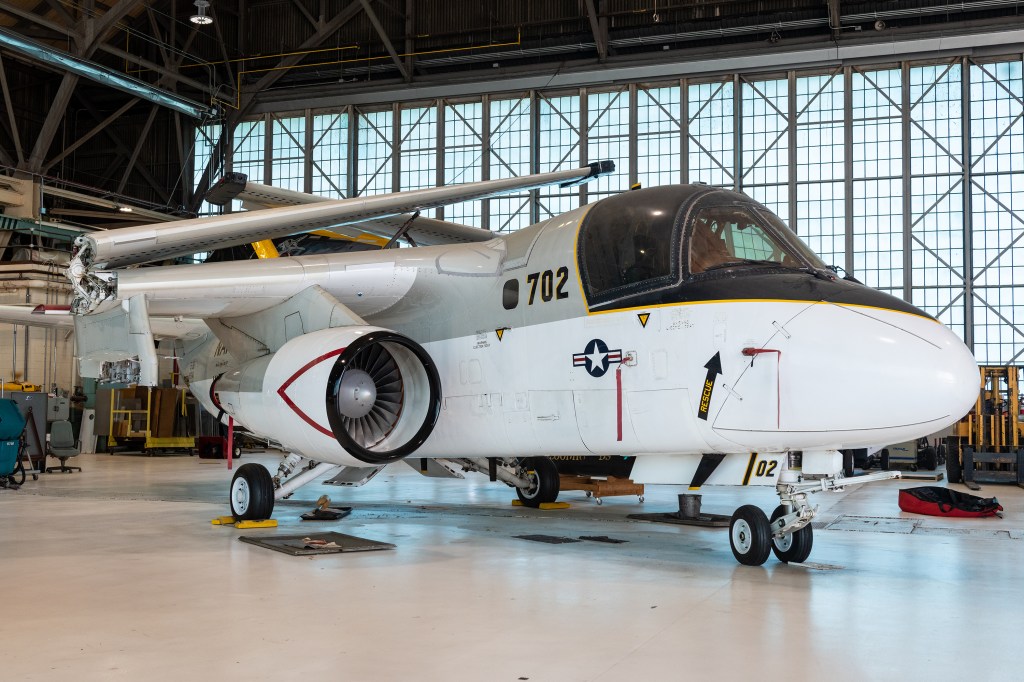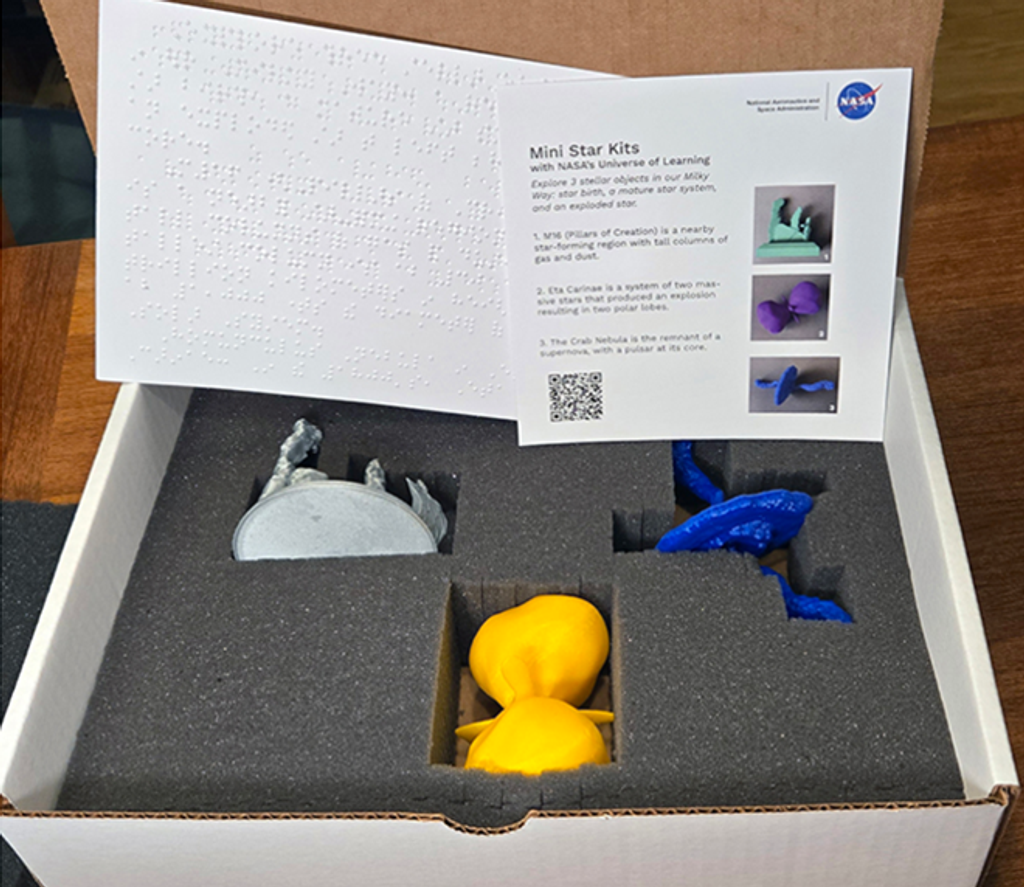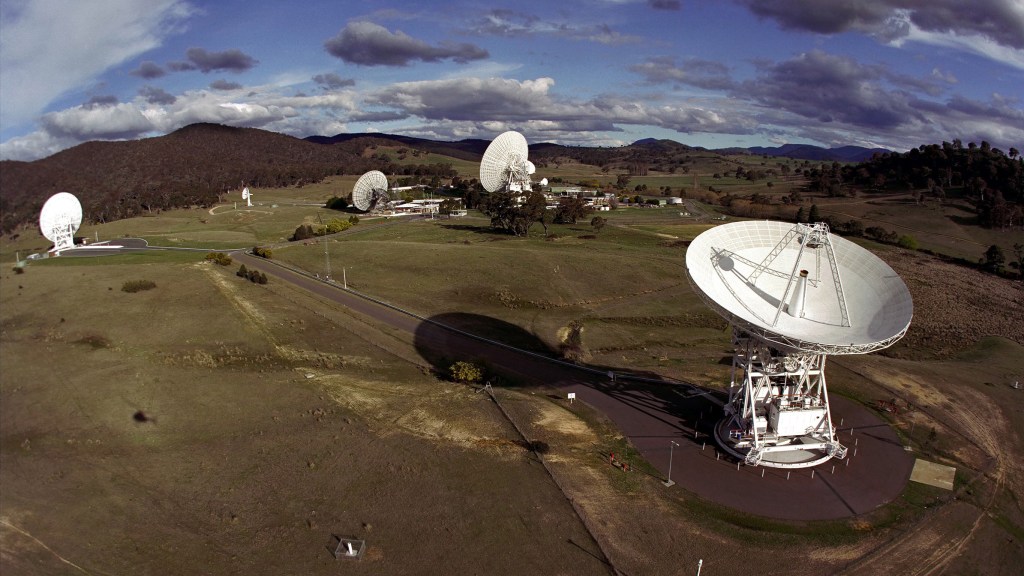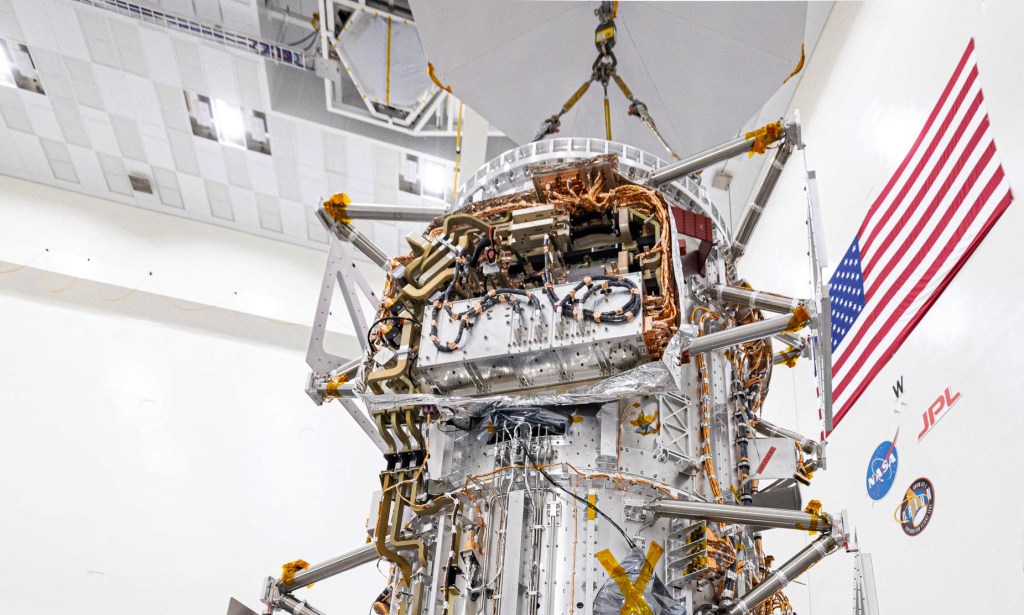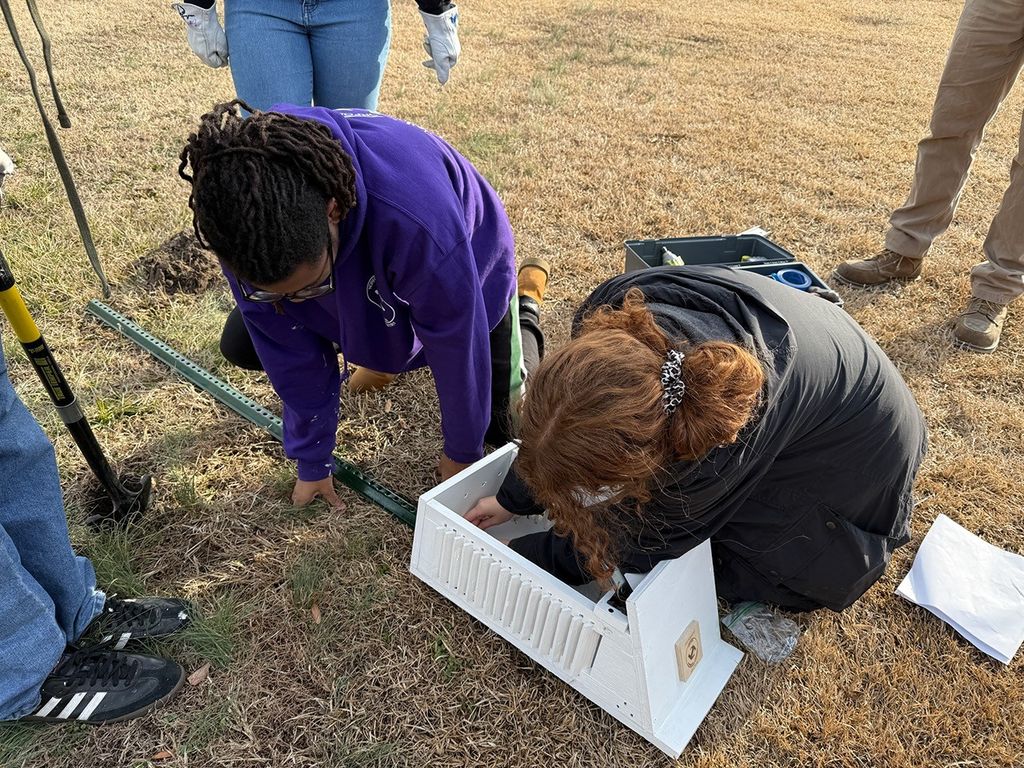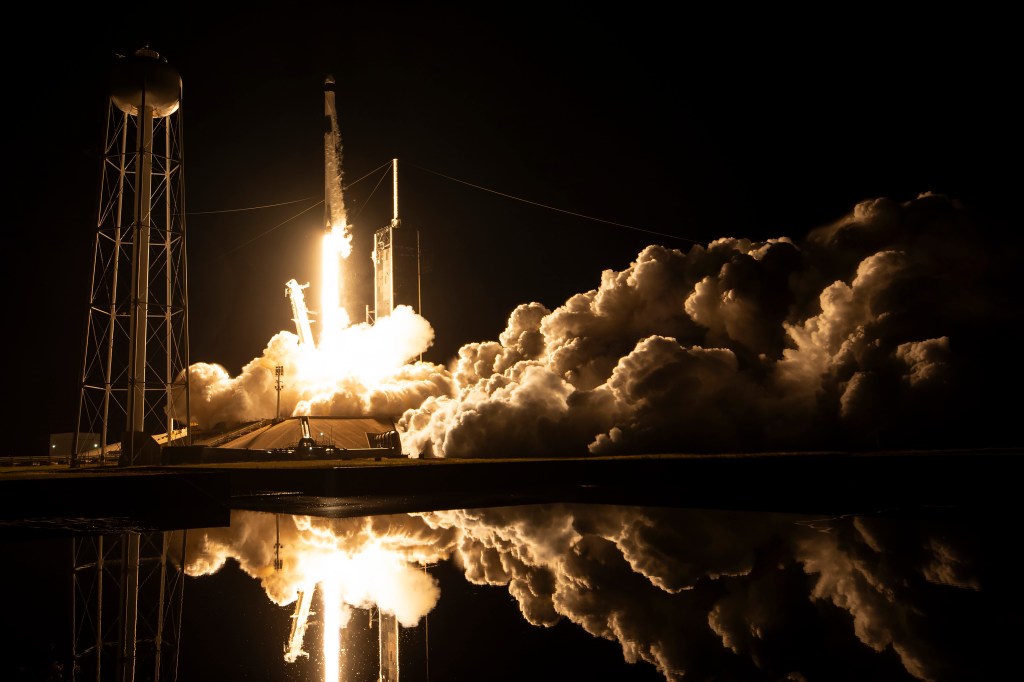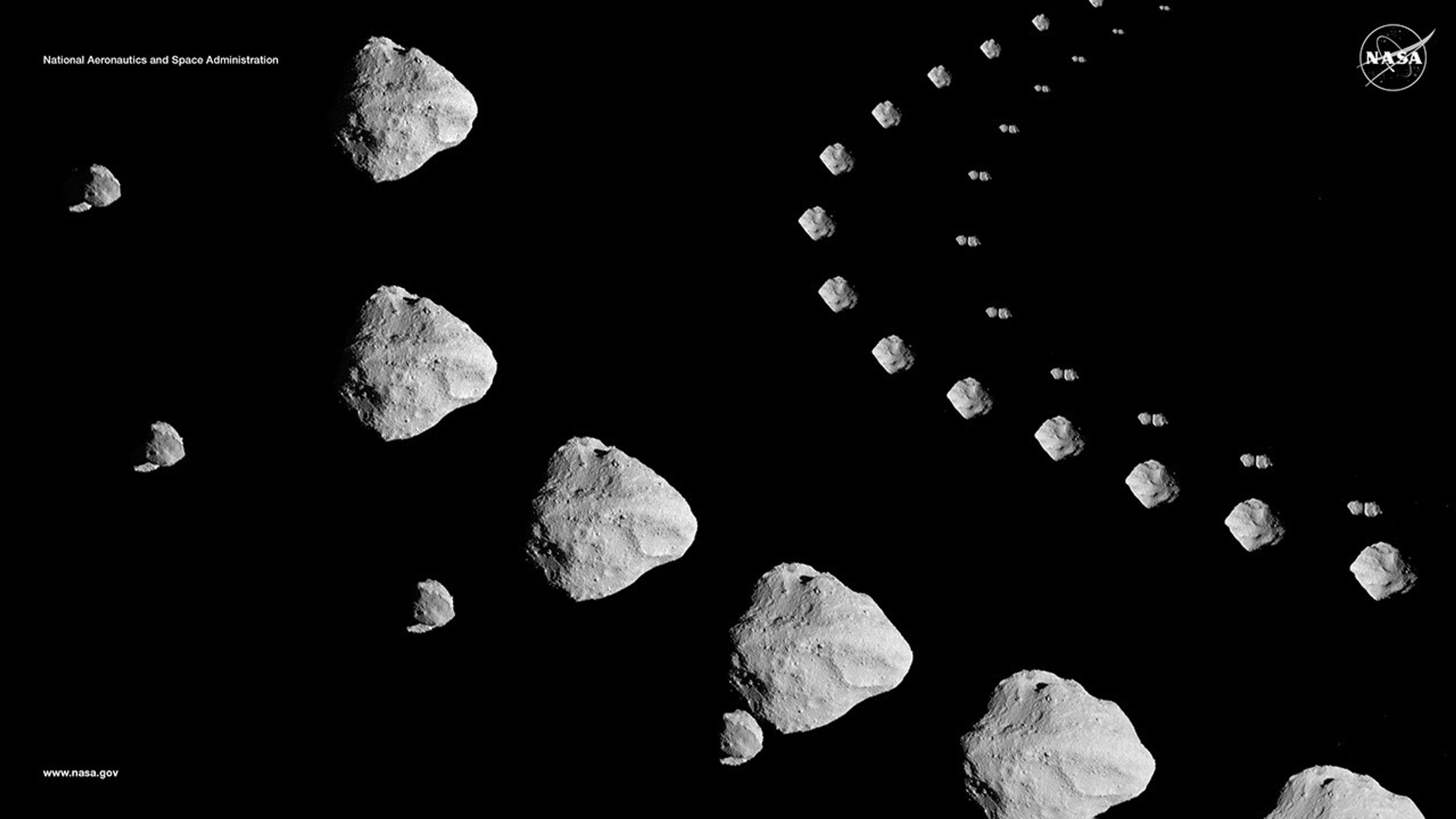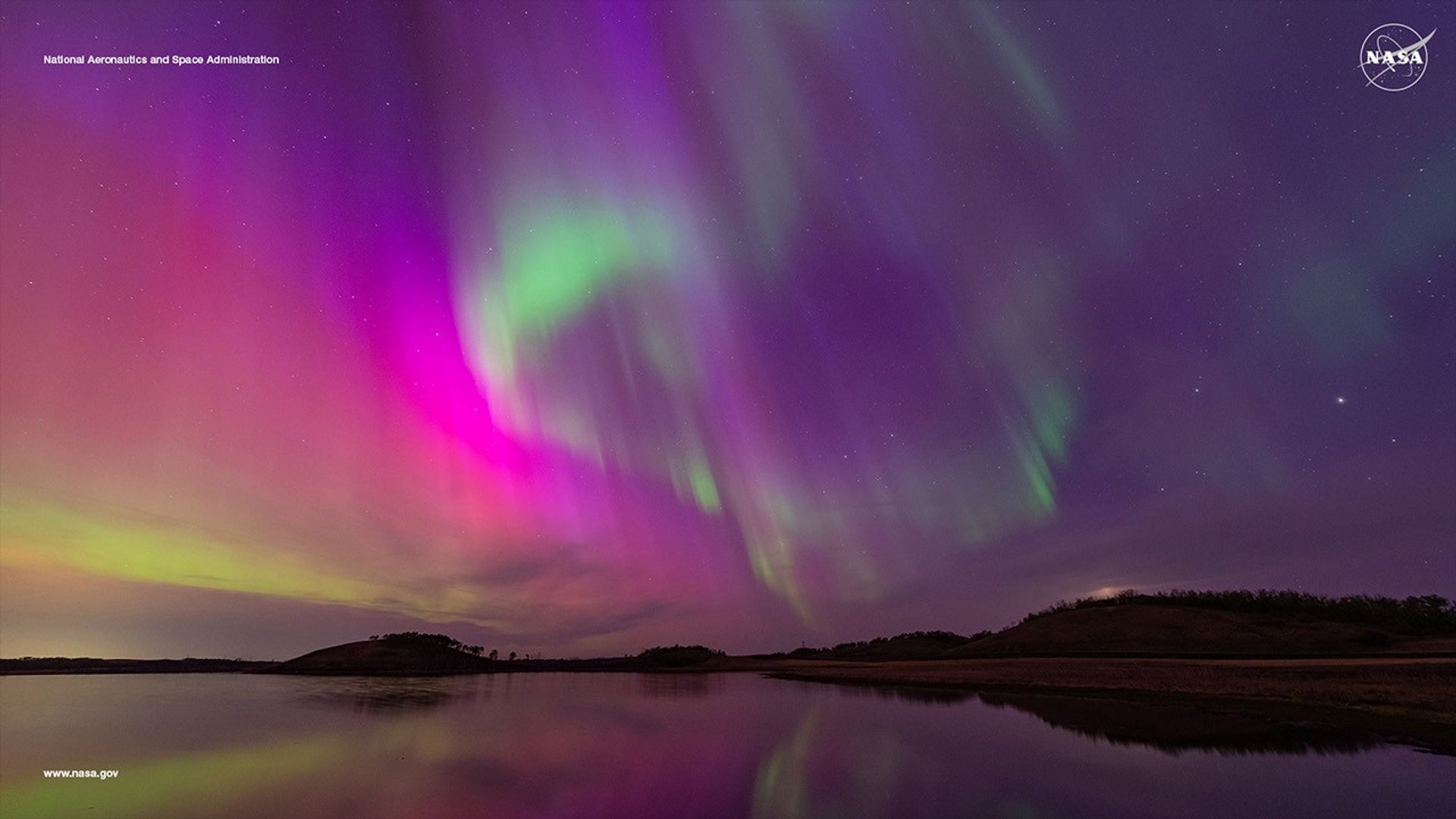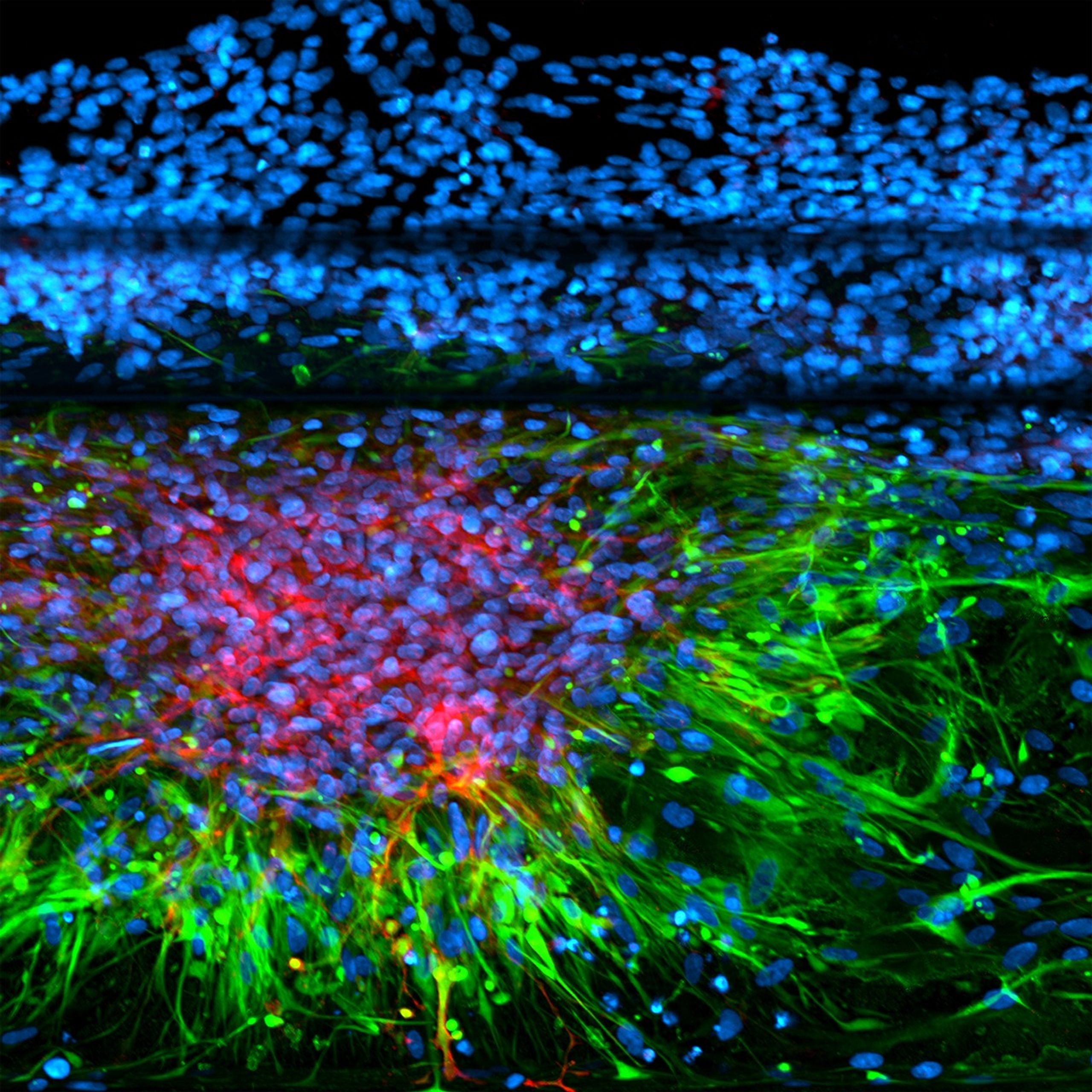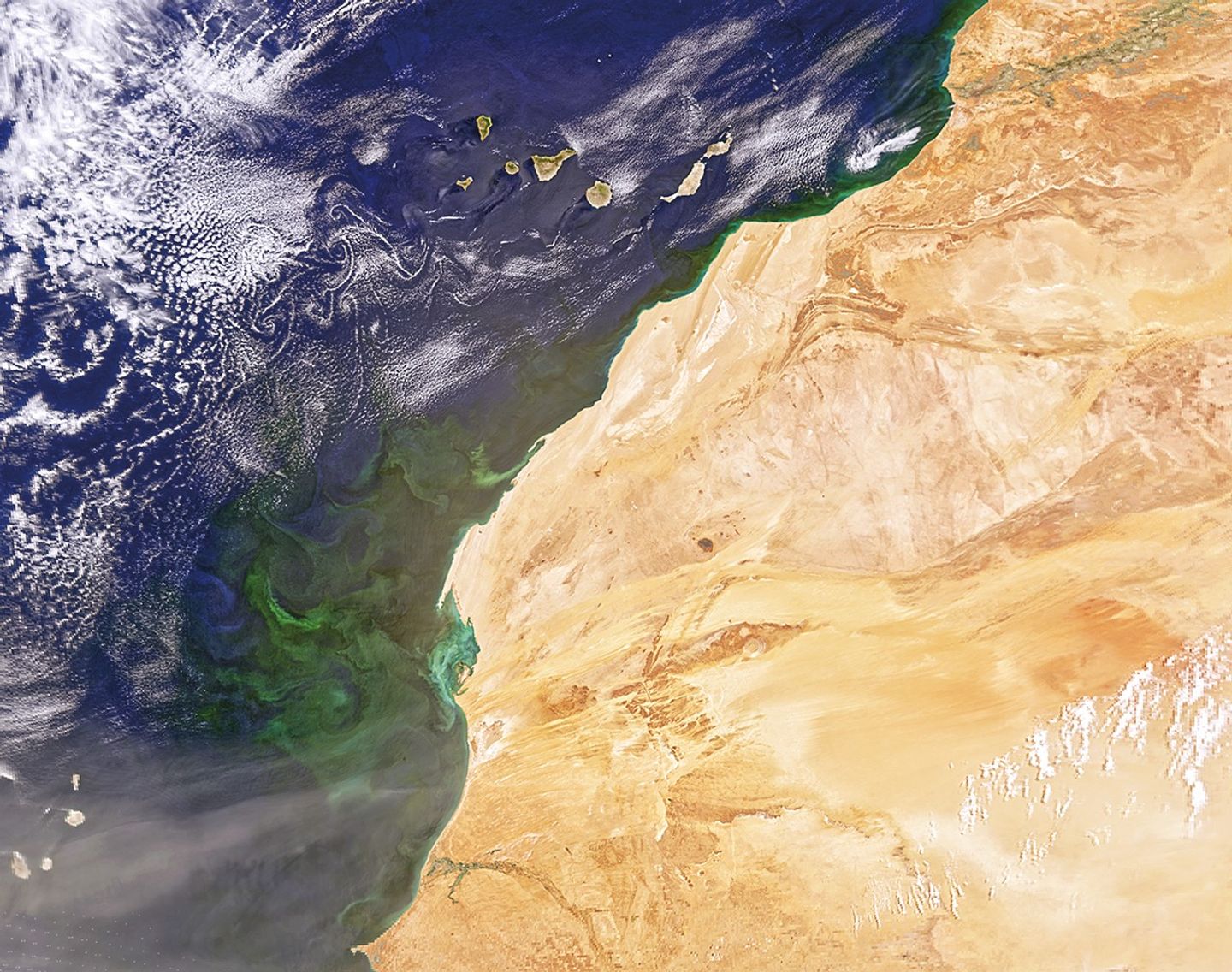Explore with us
February 2025 Image
Learn about February's amazing image. Explore related topics, activities, games, and download desktop wallpaper.
A Complex Asteroid Discovery
-
NASA’s Lucy Observes First Contact Binary Orbiting Asteroid
On its journey to the never-before-visited Trojan asteroids that share an orbit around the Sun with Jupiter, NASA’s Lucy spacecraft made a remarkable discovery during a flyby in the main asteroid belt—the first contact binary celestial body, or satellite, seen orbiting a larger asteroid. On November 1, 2023, during Lucy’s planned encounter with asteroid Dinkinesh, the spacecraft spotted the larger asteroid’s satellite, later named Selam. This montage beginning at the upper left and moving counter-clockwise shows the asteroid in the minutes around the spacecraft’s closest approach—270 miles (430 kilometers). As Lucy sped away at 10,000 mph (16,093 kph), seen in the montage on the right moving clockwise, the two lobes of Selam came clearly into view. Lucy’s encounter with Dinkinesh was added to the mission in January 2023 to test the spacecraft’s tracking and imaging system. After an Earth gravity assist in December 2024, Lucy is slated for another main asteroid belt encounter in 2025, as it continues on its mission.
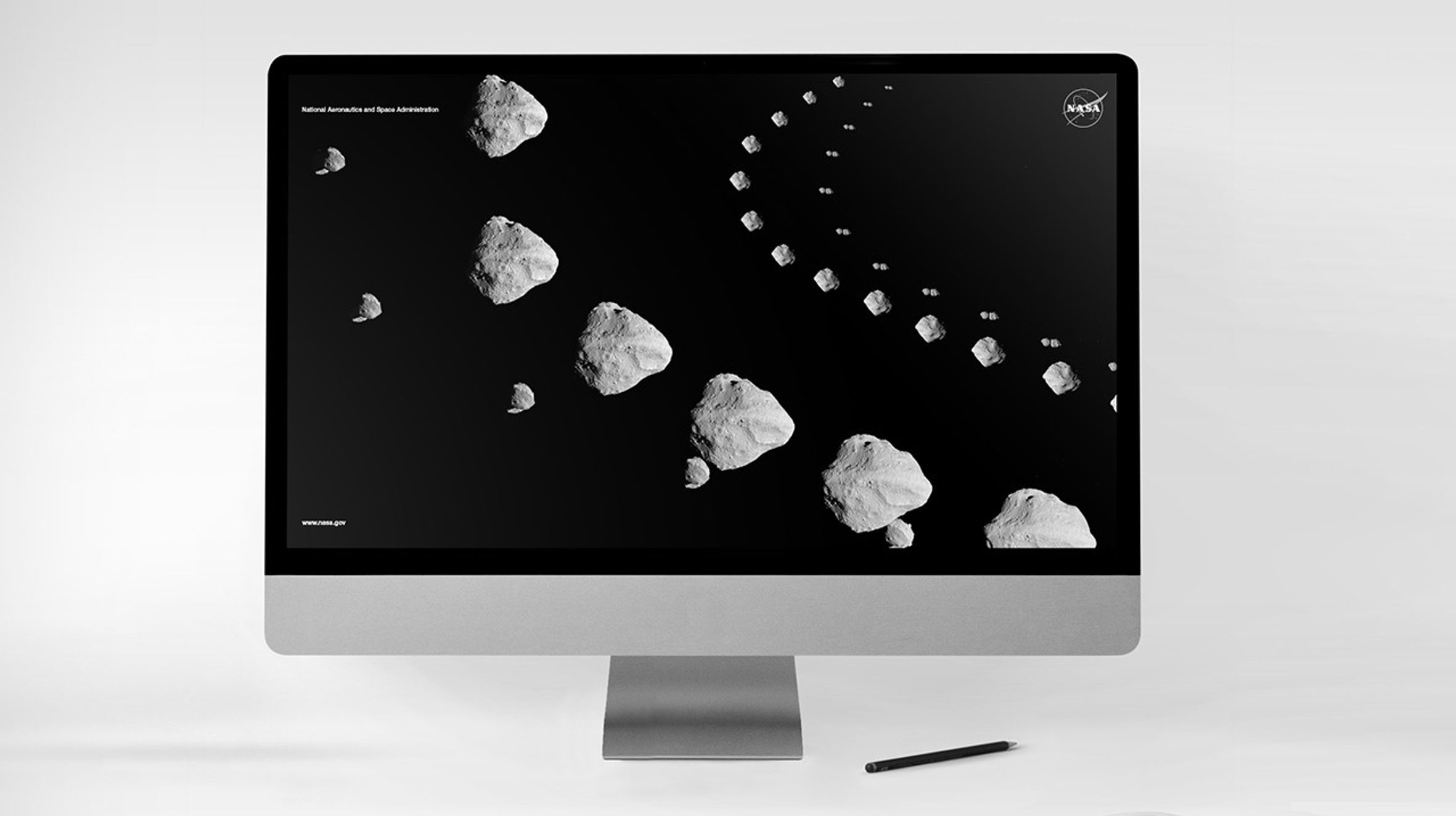
Eyes on Asteroids
Track over 30,000 asteroids that are near Earth’s orbit, see the next 5 closest approaches to Earth, and learn about current and historic NASA asteroid and comet missions in this real-time 3D simulation of the solar system.
Explore Eyes on Asteroids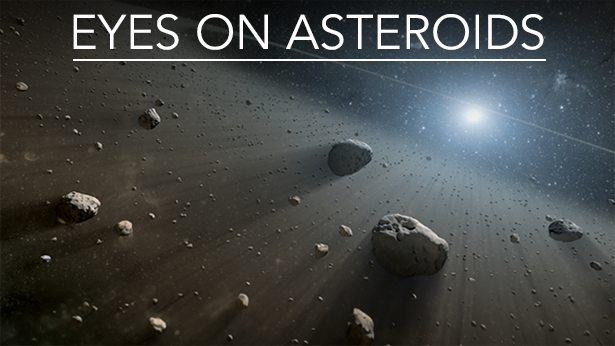
Discover More about Asteroids
Find more asteroid mission resources, learn how you can help scientists study asteroids and comets, and find other games and activities.
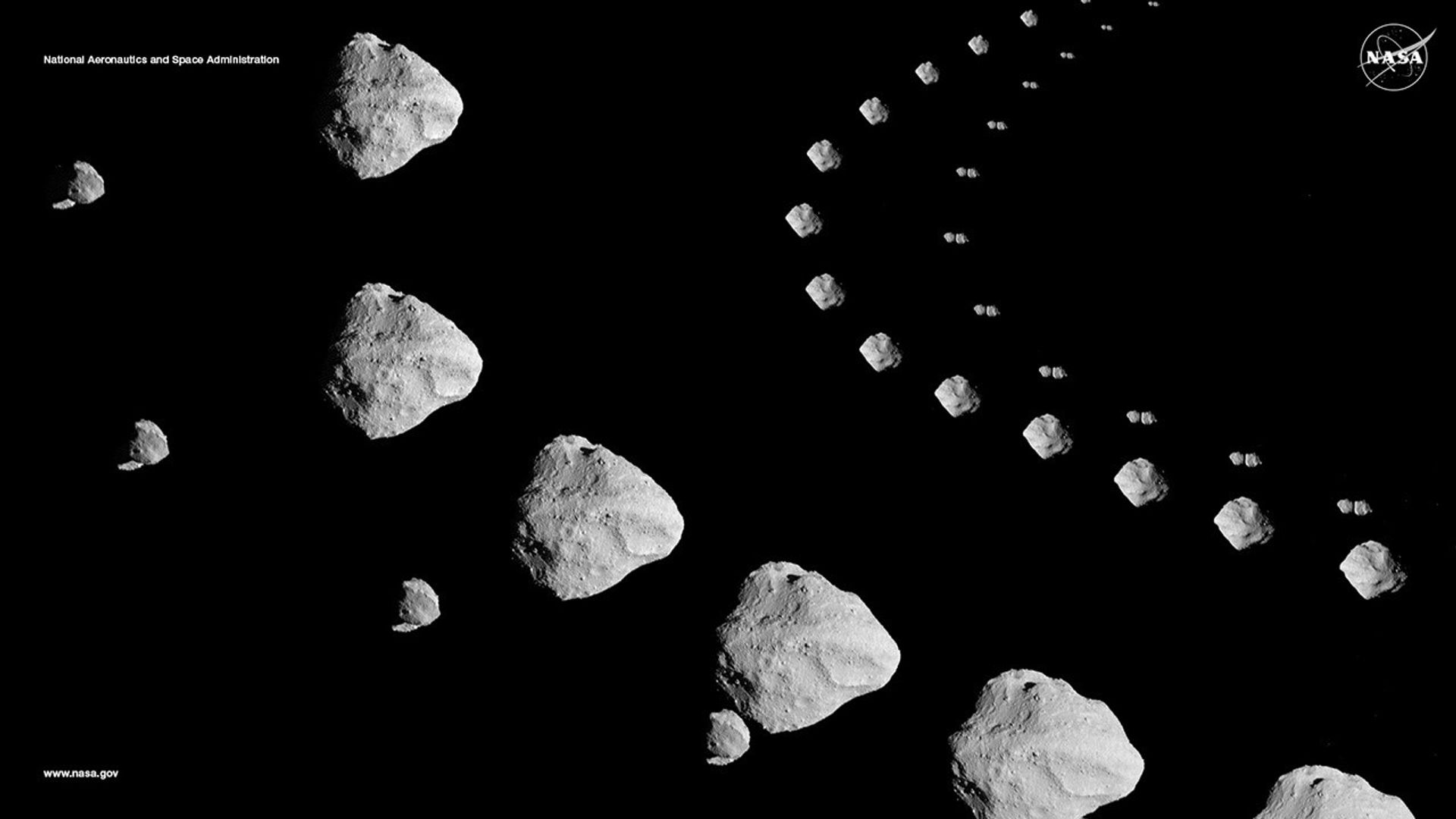
Learn More About Asteroids and Comets
Explore this collection of NASA resources, including activities, videos, animations, images, handouts, and online interactives for educators, students, and anyone interested in learning more about asteroids and comets.
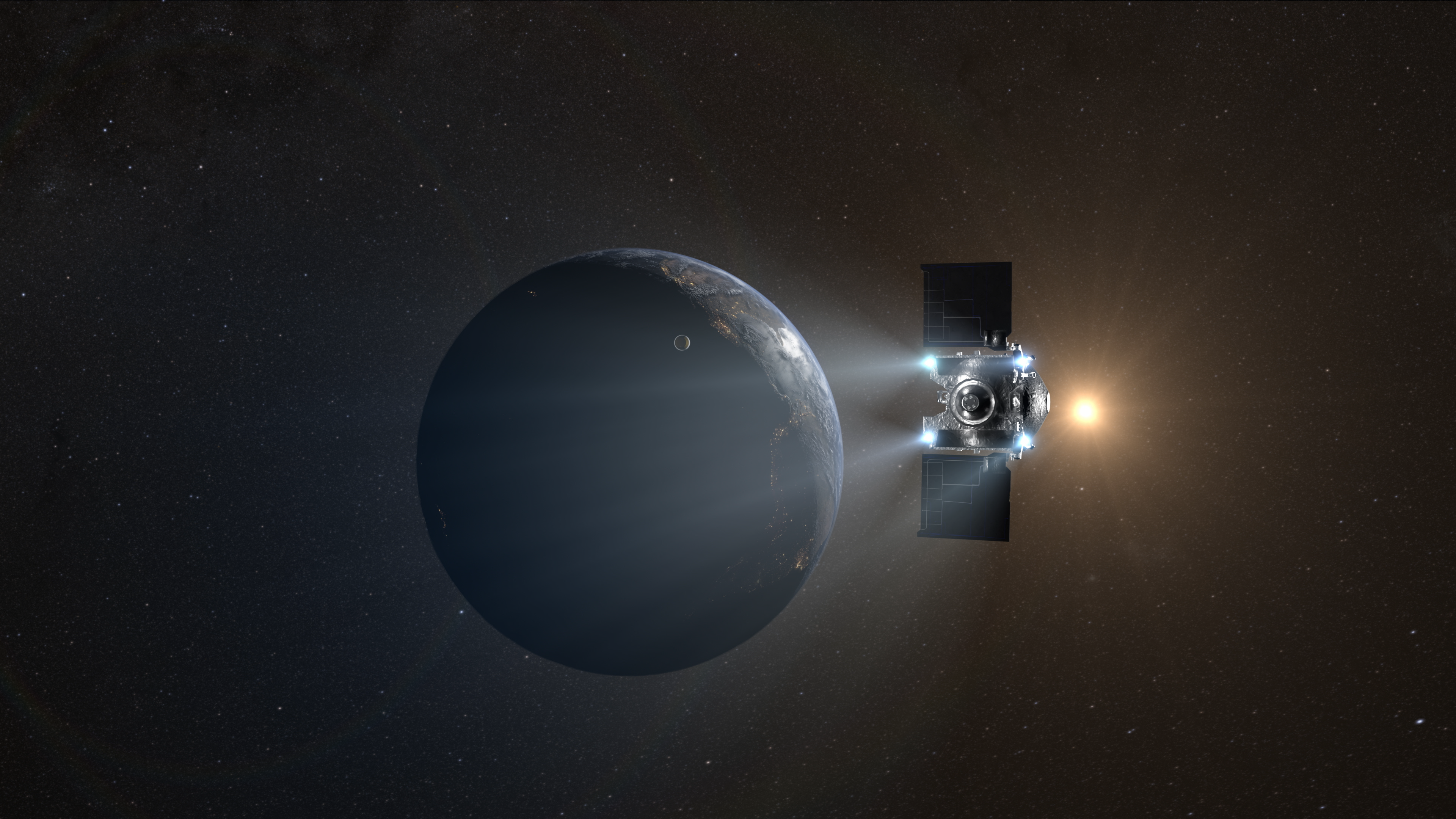
OSIRIS-REx Resources
Learn more about NASA’s mission that delivered an asteroid sample to Earth through activities, videos, and other online materials.
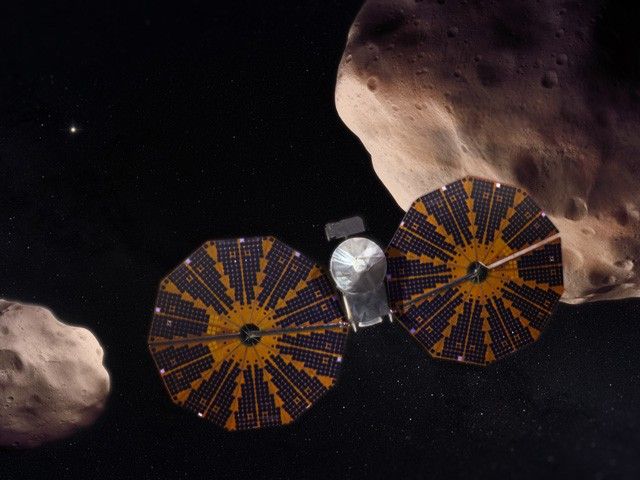
Lucy Resources
NASA’s Lucy mission is on a 12-year mission to study the Trojan asteroids that orbit the Sun in alignment with Jupiter. Follow along and learn more with these fun resources for all ages.
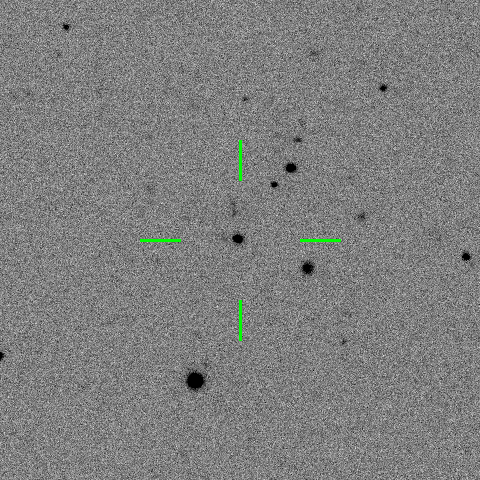
Help Study Asteroids and Comets
Anyone around the world can help study asteroids and comets (and more) through NASA Citizen Science projects. Check out some of our planetary science opportunities.
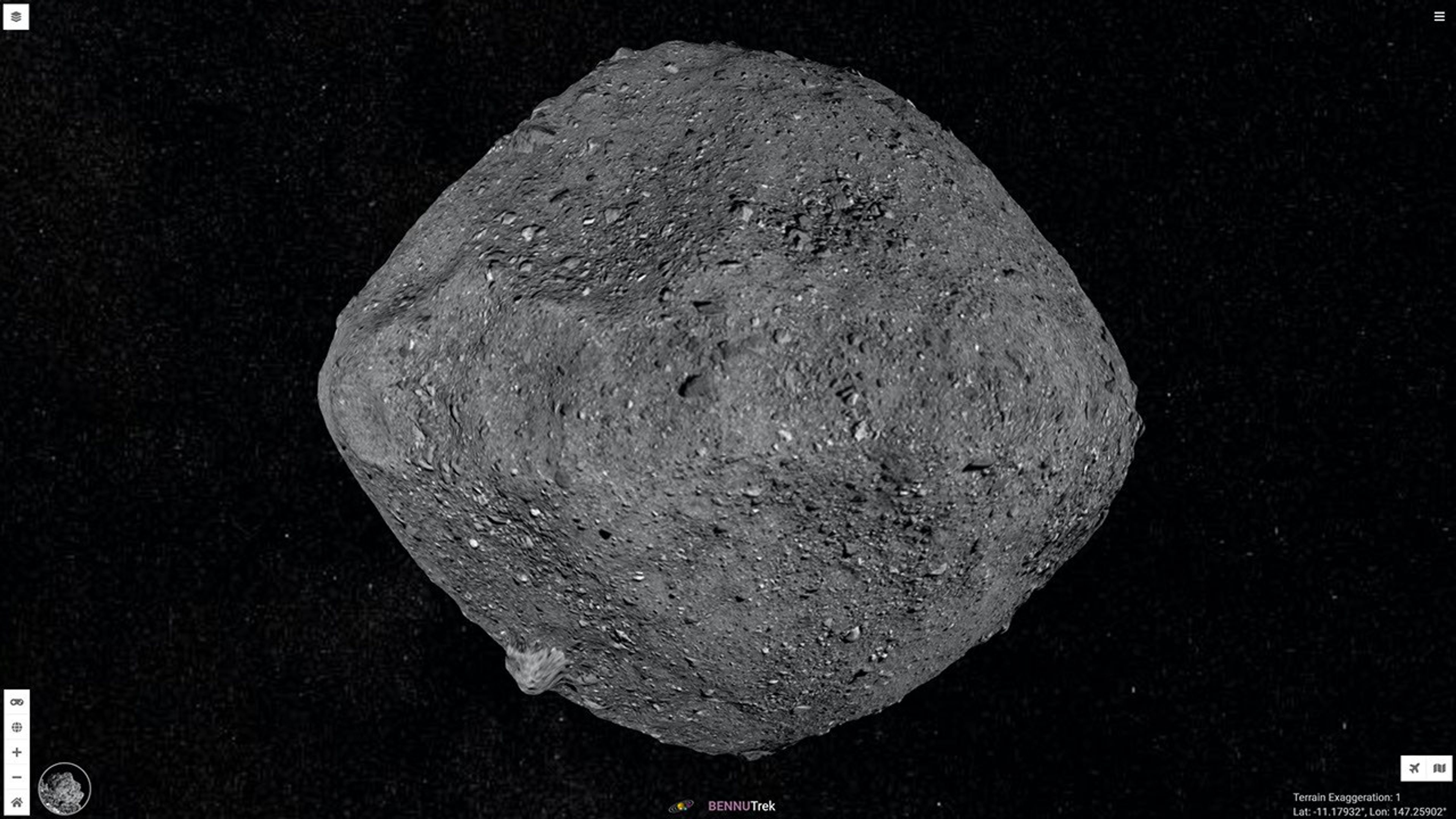
Trek Through the Solar System
NASA’s Solar System Treks allow you to visualize and explore planets and asteroids, including Bennu, Rygu, Vesta, and Ceres.
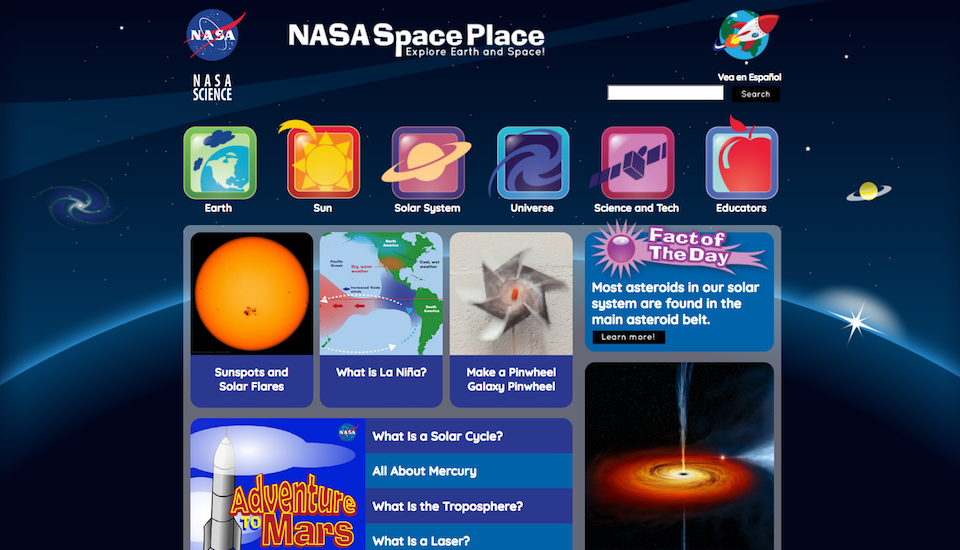
Space Place for Kids
Explore our solar system, including asteroids and comets, with activities and videos designed for younger learners via NASA’s Space Place.
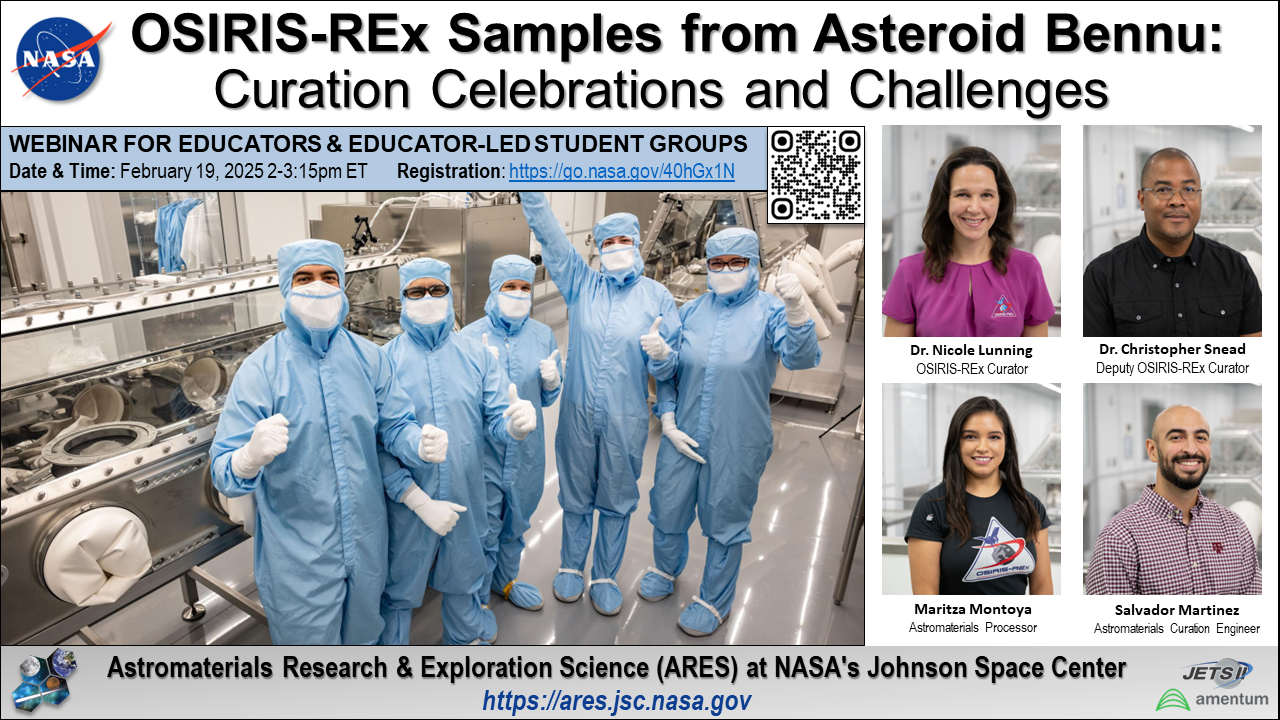
Webinar: Asteroid Curation
Join a free webinar on Feb. 19 to hear members of NASA’s curation team talk about the challenges and rewards of studying sample material from asteroid Bennu collected during the OSIRIS-REx mission.
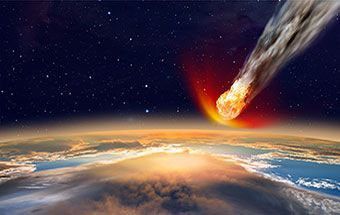
Dino Doom
This digital learning experience explains the extinction-level event that ensued when an asteroid hit Earth some 66 million years ago and follows researchers as they track down clues about this cosmic event.
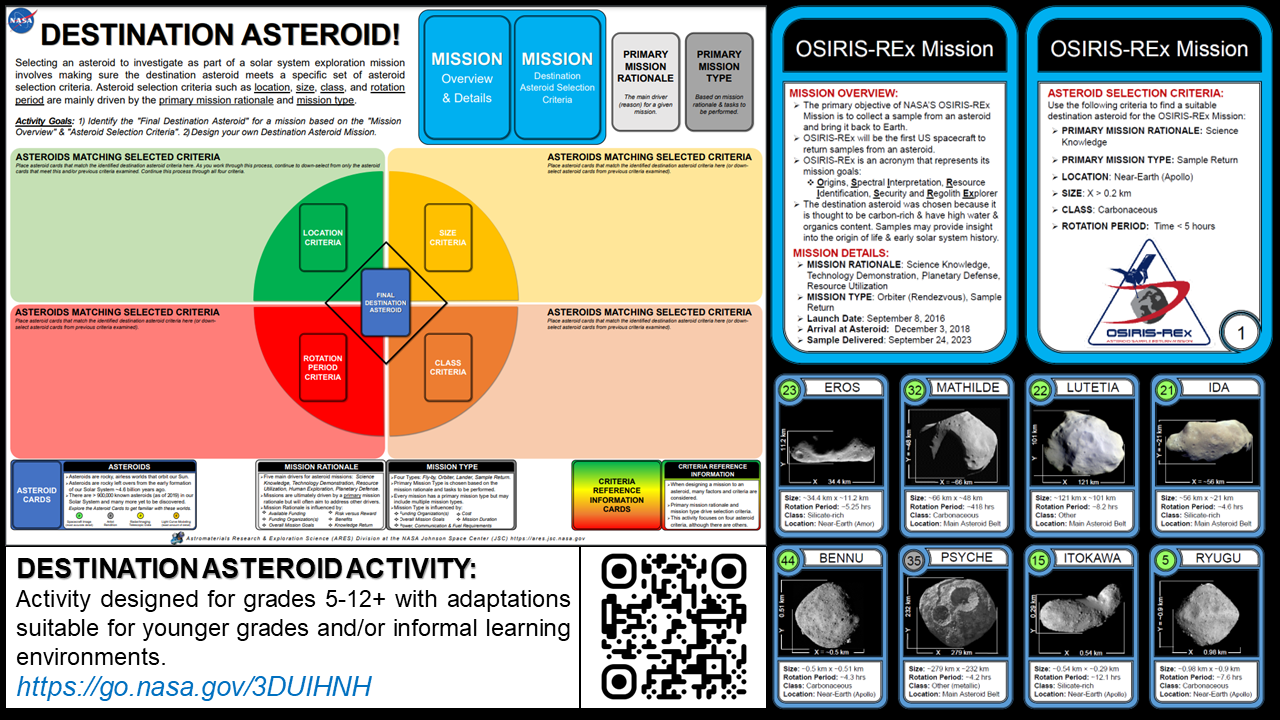
Destination Asteroid
This hands-on activity for grades 5-12+ introduces includes selecting an asteroid to investigate as part of a solar system exploration mission.
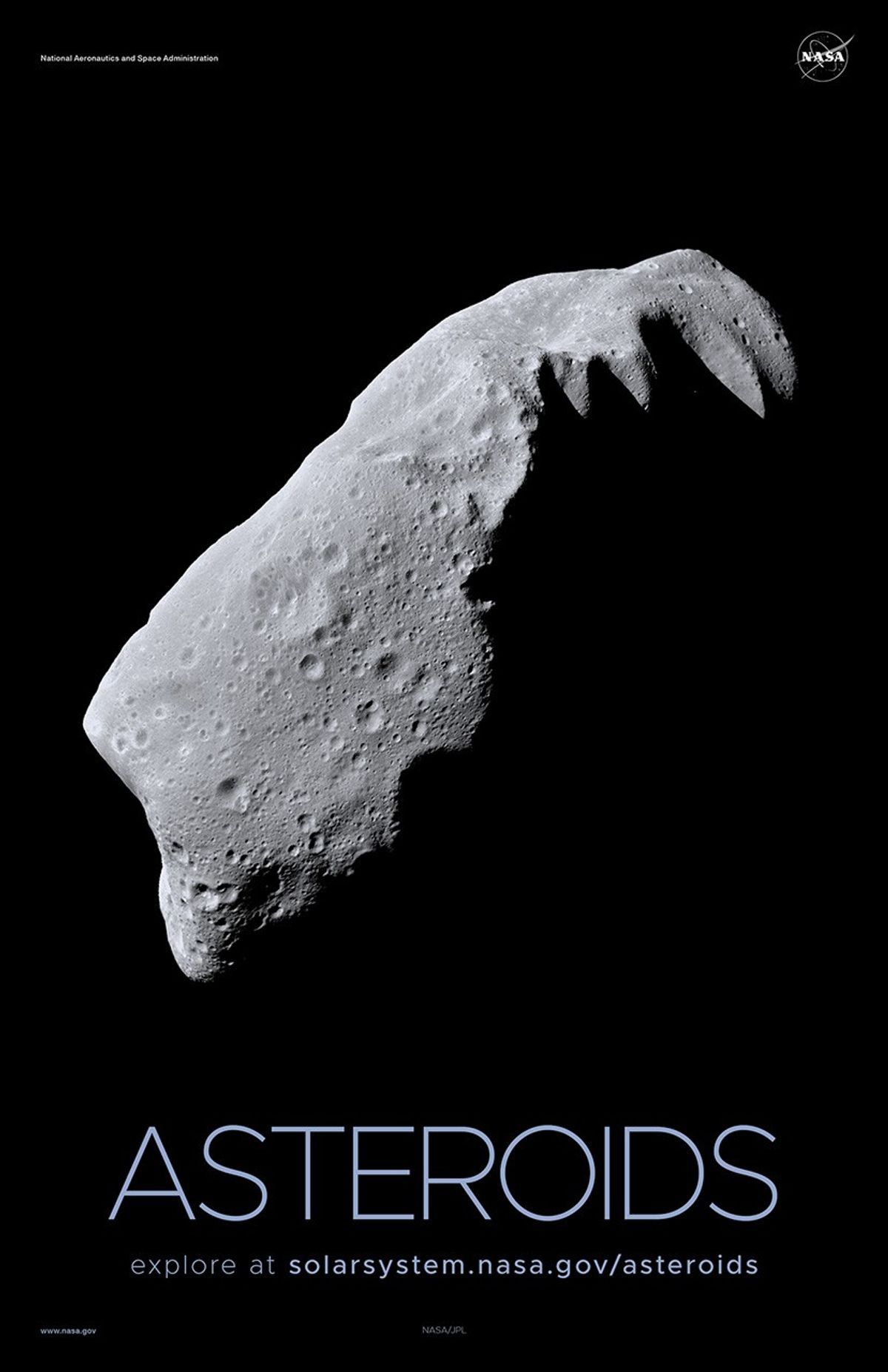
Solar System Posters
Download the whole set or pick your favorite asteroid, comet, or planet poster showcasing the beauty of our solar system.
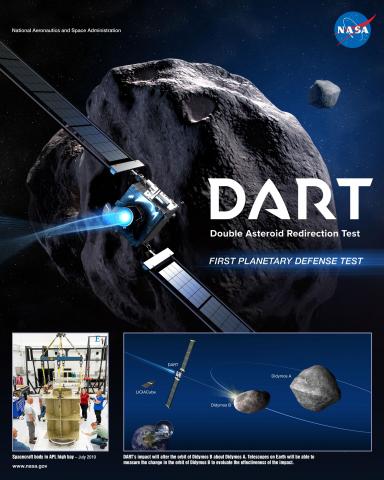
NASA Mission Posters
Find your favorite NASA planetary science mission, including those observing asteroids and comets, and download its science mission – or choose them all.
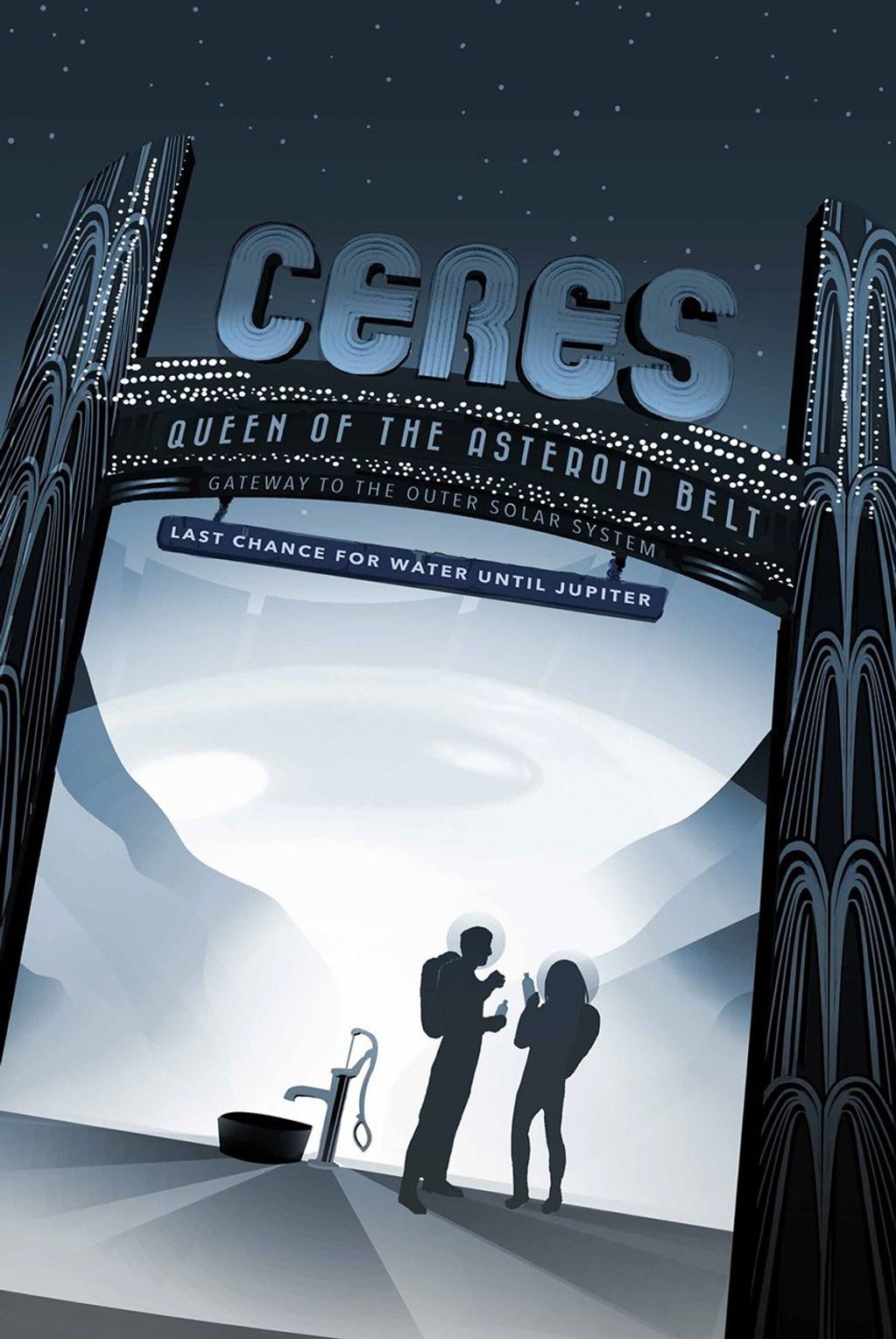
“Travel” the Solar System
These stylized “travel” posters feature far-off destinations, including asteroid Ceres, as envisioned by the NASA JPL “Exoplanet Travel Bureau.”
Movie Trailer: Planetary Defenders
This gripping documentary follows the dedicated team that detects, tracks, and plans for our planetary defense if a large asteroid were ever on track toward Earth.
Learn more about Planetary Defenders2025 NASA Science Calendar
Download our latest calendar and wallpaper backgrounds for your desktop or mobile device, and discover the fascinating science behind the images featured each month.
Download Options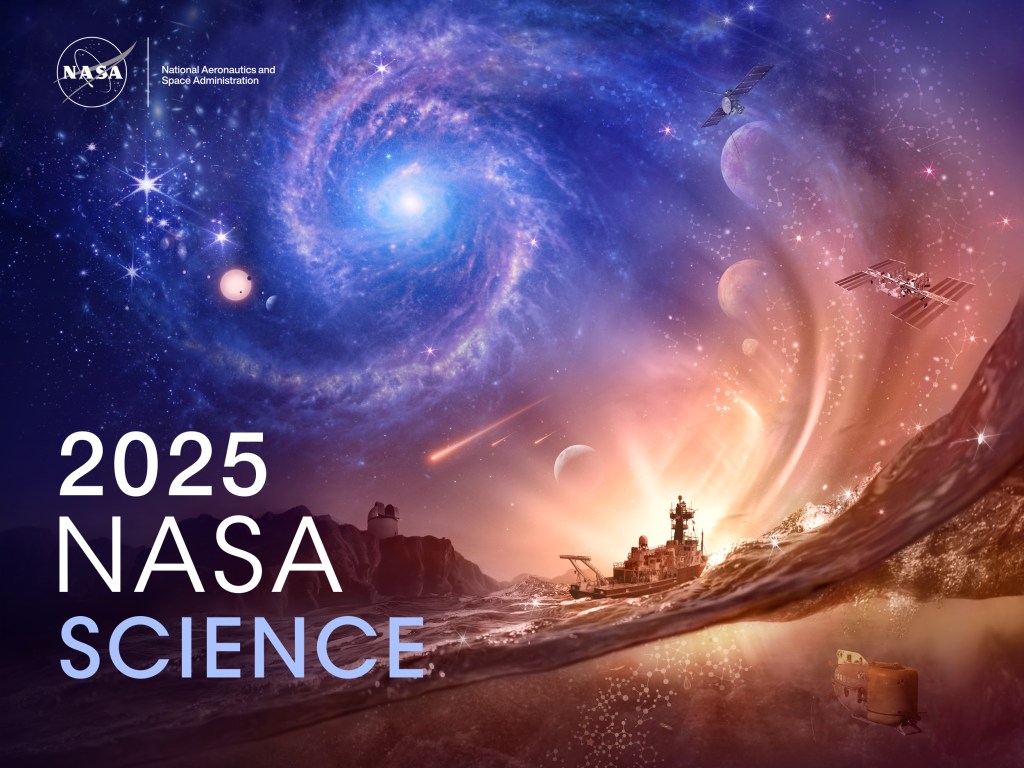
Explore our other featured images
Explore NASA's media galleries to view and download high-resolution images of the solar system, agency missions, and more.

